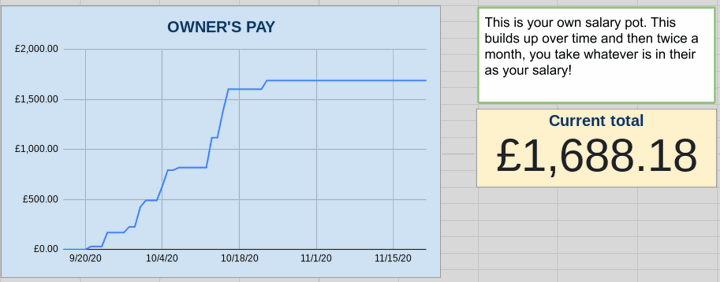What price should I charge for X? How much do you charge for Y? It’s a question that I see constantly coming up in the landscaping community. Let’s imagine our friend ‘John’ has asked a pricing question in an online group and sees a huge range of answers: “It depends on your location”, “Price it per square meter”, “charge a day rate”, and whatever else is thrown about.
After an hour of discussion, John hasn’t really had a helpful answer. There were too many things thrown around and actually John is no closer to finding a method that works for him.
How you price up a job shouldn’t be based on anyone else’s advice, even if they are very experienced. The most important message is this: the way you price should be based on your company, not anyone else’s.
A single person team with no overheads needs to price differently to a company with 3 gangs and multiple vehicles to run!
So, how does John figure out the best way to price up jobs for HIS company? The answer is simpler than you might think, but it will require a little work up front. Lets dive into this in a bit deeper and see how John - and any other landscaping business - can start pricing perfectly:
It's really as simple as that.
If you haven't already, the very first thing you need to do is calculate your margins.
Profit margins are the foundations for knowing what you need to charge in order to make a profit - if you doesn't know your margins, your pricing is effectively an educated guess!
It doesn't need to be that complicated. If you have a full finance department crunching all your numbers in the background, then great, but 99% of us don't. We need a simple way to know how to price up for a profit. So here's out best, most straightforward method that any landscape business can apply.
To give you a clearer idea of where your money goes, rather than having one profit margin to work to, we're going to categorise income into multiple margins. By categorising your income into multiple margins, it makes it easier to see where you should and shouldn't be spending money on different projects. The categories are as follows:
We need to categorise every outgoing transaction from the last 12 months into one of these categories. This will help us see where our money goes. For example:
Once you know these numbers, you'll have a really key bit of info that will help you with your pricing
Step 2. Convert Totals Into Percentages
To make these numbers into something easier to use, we need to turn them into percentages. It's easy to do, and we only need to do it with one formula:
(Category Total/Total of all Categories)x100
That will give you your percentage - or margin - for each category. For example:
There you have it. These percentages can now act as your 'margins'.
Quick note: If you’d like to get your margins established, we are very happy to do this for you. Just get in touch and let us know. You can see our regular prices and services here.
Now you’ve got them worked out, it’s time to put them into action.
We have some good news - the pricing method you are using now is absolutely fine - you don't need to make any dramatic changes to what you are already doing. We're not here to reveal a secret method of working out long a job will take, but we are here to make sure that you can be confident your pricing is correct. Think of it as a final adjustment, or a final check process.
Price your work up as you normal would - say £10,000 - and then divide that up into the percentages you came up with in the last step. In our example it would be:
Your next job is to analyse these numbers to see if they are going to cover the costs involved with the project. Is £4000 enough to cover all the materials, is £800 enough for you to take home for yourself? Scrutinise every number to make sure you have enough budget to cover all the costs involved with the project.
If the numbers fit, then great. If not, rather than adjusting individual numbers, adjust the entire quote price until the numbers fit snuggly into your margins and the amounts are going to cover your needs.
This method is a rock solid way to help you with your pricing that is bespoke to you and your business. There is no single price that is the ‘correct price’, but there is a price that is right for you and your company - and this method will help you find it.
By sticking to these margins, you guarantee yourself a profit, whilst remaining competitive!
Now it's time to start improving your margins. These initial numbers should act as your starting point, but you don't want to stay there forever. You want to improve them constantly and carefully.
Small adjustments can add up to a huge difference over time. So don't rush it.
We recommend adjusting your margins by 1% a month. Reduce either expenses or wages by 1% and add this to another category - profit, owners pay or tax.
1% over the course of a year can be significant if it's carefully managed. If you turnover £100,00, and adjust your take-home pay by 1%, that's an extra £1,000 in your pocket which is not to be sniffed at.
The very first adjustment you should make is to reduce your expenses margin by 1% and add this to your profit margin and price up jobs according to these figures. Do the same every month, reduce something by 1% and increase something else by the same amount. Your business will be more and more profitable every single month.
This entire process is something that we can fully manage. For a monthly fee, we can do all of this for you. We can work out your margins, consistently adjust them in a safe and sustainable way, and then provide you with a perfect pricing calculator that means you can price up based on your margins with ease.
We can get the ball rolling with a free consultation. We will talk to you about your business, how it's going and see how we can help you. Book yourself in for a call below.


